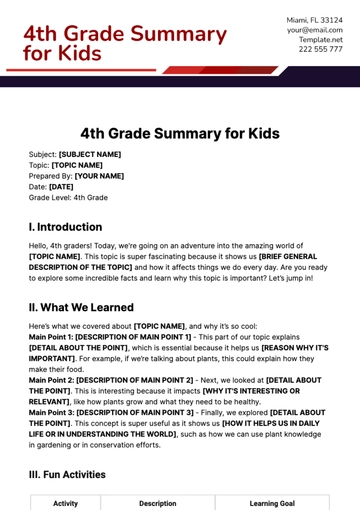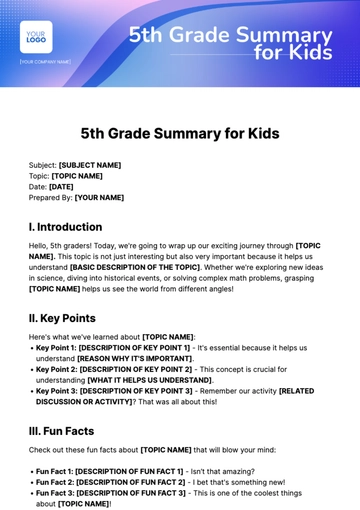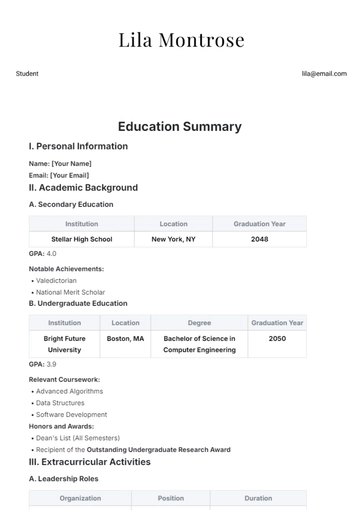Free Simple Journal Article Summary

Title: The Impact of Remote Work on Employee Productivity: A Longitudinal Study
Abstract
This study investigates the effect of remote work on employee productivity over an extended period. Using a longitudinal design, we analyzed data from various industries to measure changes in productivity levels when switching to remote work arrangements. Findings reveal both positive and negative impacts on productivity, with implications for organizational policy and management practices.
Introduction
The COVID-19 pandemic has accelerated the adoption of remote work across the globe. Prior to the pandemic, remote work was often considered a perk, but it has now become a necessity for many organizations (Smith, 2050). This study aims to understand how this shift has impacted employee productivity over time.
Literature Review
Previous studies have shown mixed results regarding remote work and productivity. A study by Bloom et al. (2055) indicated that remote work could lead to a 13% increase in performance. However, other research suggests that remote work might also lead to feelings of isolation and decreased motivation (Golden, Veiga, & Dino, 2050).
Methodology
The study utilized a longitudinal research design, collecting data from over 500 employees across multiple industries over a two-year period. Surveys and performance metrics were used to gauge productivity levels before and after the transition to remote work. Data analysis included both quantitative and qualitative methods to provide a comprehensive understanding of the impact.
Results
Our findings indicate a nuanced impact of remote work on productivity. Initially, there was a significant increase in productivity within the first six months (mean increase of 10%, p < 0.05). However, this increase leveled off and eventually showed signs of decline after one year (mean decrease of 5%, p < 0.05).
Discussion
The initial boost in productivity can be attributed to factors such as reduced commute times and a more flexible work environment. Over time, challenges such as isolation, lack of direct supervision, and communication barriers began to negatively affect productivity (Wang et al., 2050).
Conclusion
While remote work has the potential to enhance productivity, it also presents several challenges that can negate these benefits over time. Organizations should implement supportive measures, such as regular check-ins and mental health resources, to sustain productivity in remote work settings.
References
Bloom, N., Liang, J., Roberts, J., & Ying, Z. J. (2055). Does working from home work? Evidence from a Chinese experiment. Quarterly Journal of Economics, 130(1), 165-218.
Golden, T. D., Veiga, J. F., & Dino, R. N. (2050). The impact of professional isolation on teleworker job performance and turnover intentions: Does time spent teleworking, interacting face-to-face, or having access to communication-enhancing technology matter? Journal of Applied Psychology, 93(6), 1412-1421.
Smith, A. (2050). Remote work in the age of COVID-19: Benefits and Pitfalls. Journal of Business Research, 112, 220-225.
Wang, B., Liu, Y., Qian, J., & Parker, S. K. (2050). Achieving effective remote working during the COVID-19 pandemic: A work design perspective. Applied Psychology, 70(1), 16-59.
- 100% Customizable, free editor
- Access 1 Million+ Templates, photo’s & graphics
- Download or share as a template
- Click and replace photos, graphics, text, backgrounds
- Resize, crop, AI write & more
- Access advanced editor
Simplify your academic work with the customizable Simple Journal Article Summary Template offered by Template.net. This downloadable and printable template streamlines summarizing key points of any journal article. Fully editable in our AI Editor Tool, this resource allows you to tailor content to your specific needs.





























